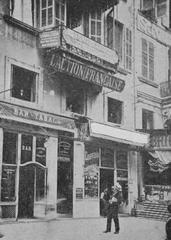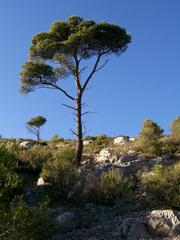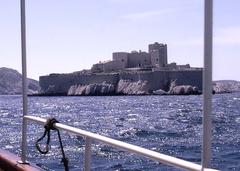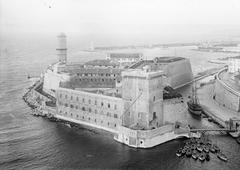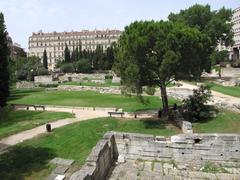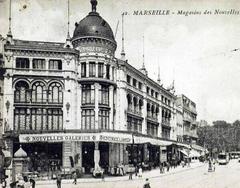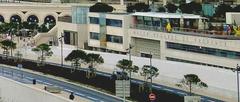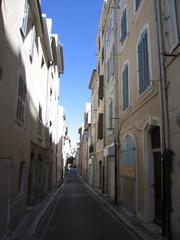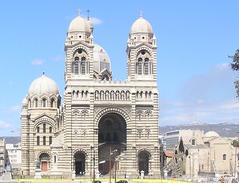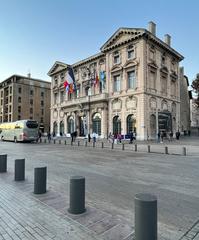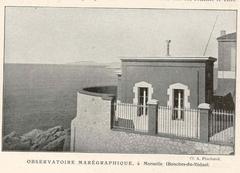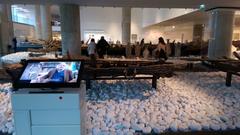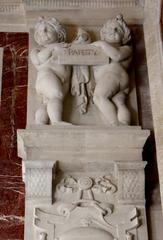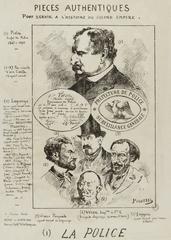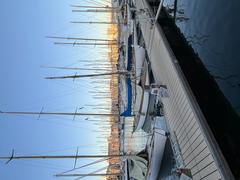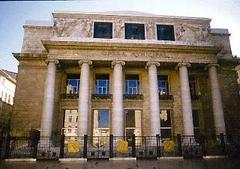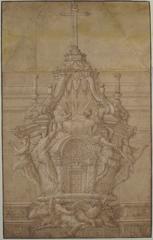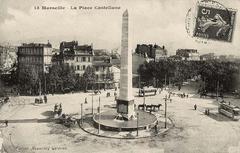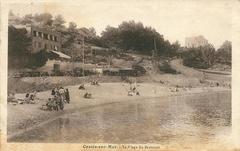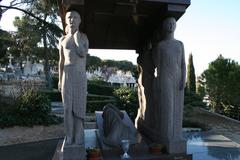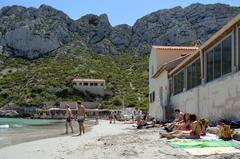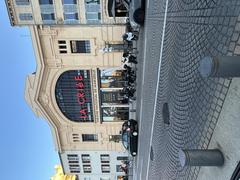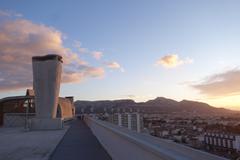Muséum d’Histoire Naturelle de Marseille: Visiting Hours, Tickets, and Complete Guide
Date: 15/06/2025
Introduction
Nestled within the grand Palais Longchamp, the Muséum d’Histoire Naturelle de Marseille is one of France’s oldest and most revered natural history museums. Founded in 1819, the museum has grown into a major institution that documents the biodiversity and natural history of Provence, the Mediterranean, and the world. This guide delivers everything you need for your visit—opening hours, ticketing details, accessibility, travel tips, and highlights of its collections and history.
Whether you are a first-time visitor, a family, a researcher, or a history enthusiast, the Muséum d’Histoire Naturelle de Marseille offers immersive exhibitions, educational activities, and a unique cultural experience in one of Marseille’s most iconic settings. For more details, see the official museum website or Marseille Tourism.
Contents
- Visiting Hours and Tickets
- Directions and Accessibility
- Photography and Visitor Tips
- Historical Overview
- Thematic Organization and Exhibition Spaces
- Cultural and Scientific Significance
- Notable Specimens and Highlights
- Accessibility and Community Engagement
- Frequently Asked Questions (FAQ)
- Plan Your Visit & Nearby Attractions
- Summary and Final Tips
- Sources
Visiting Hours and Ticket Information
- Opening Hours: Tuesday to Sunday, 10:00 AM to 6:00 PM; closed Mondays and certain public holidays.
- Permanent Collections: Free admission.
- Temporary Exhibitions: May require a ticket; free on the first Sunday of each month and on opening days.
- Guided Tours: Available upon request; book in advance via the museum website.
Directions and Accessibility
- Address: Palais Longchamp, Boulevard Longchamp, 13004 Marseille, France
- Public Transport: Metro Line 1 (Cinq Avenues – Longchamp), buses 21, 22, 24.
- Car: Nearby street parking; coach parking for groups.
- Wheelchair Access: Full accessibility with ramps, elevators, and adapted restrooms.
- Service Animals: Welcome.
Photography and Visitor Tips
- Photography: Allowed for personal use without flash or tripods.
- Best Times: Visit on weekday mornings for a quieter experience; check calendar for special events.
- Visitor Engagement: Participate in nature outings, workshops, or temporary exhibitions for a richer experience.
Historical Overview
Founding and Early Development (1819–1869)
Established in 1819 by Jean-Baptiste, Marquis de Montgrand, and Christophe de Villeneuve-Bargemon, the museum was originally housed in the Chapelle des Bernardines. Rapid growth led to several relocations due to expanding collections (Nomads Travel Guide).
Move to Palais Longchamp (1869)
In 1869, the museum settled in the right wing of the newly built Palais Longchamp—a monumental structure commemorating Marseille’s water supply. This move reflected Marseille’s ambition as a cultural and scientific center (Nomads Travel Guide; Marseille Museums).
Growth and Scientific Influence (Late 19th–Early 20th Century)
Under the directorship of naturalist Antoine-Fortuné Marion, the museum expanded its collections and reputation, amassing tens of thousands of zoological, botanical, paleontological, and mineral specimens (WhichMuseum).
Recognition and Modernization (2002–Present)
Recognized as a “Musée de France” in 2002, the museum modernized its exhibitions and outreach. The “Terre d’évolution” permanent exhibition, launched in 2020, immerses visitors in the history of life on Earth (Agenda Culturel). The bicentennial in 2019 celebrated 200 years of natural history in Marseille.
Thematic Organization and Exhibition Spaces
The museum is organized into four main exhibition areas (WhichMuseum; Anigaïdo):
- Salle Safari: Fauna from around the world.
- Salle de Provence: Regional biodiversity of Provence and the Mediterranean.
- Salle d’Ostéologie: Comparative anatomy and skeletons.
- Salle de Préhistoire: Human evolution and prehistory.
A modern museography blends with 19th-century architecture, providing an engaging and educational journey.
Cultural and Scientific Significance
Located at the intersection of European and Mediterranean environments, the museum is a testament to Marseille’s rich natural and scientific heritage (Marseille Museums). It is deeply involved in public education, organizing regular nature excursions, workshops, and international initiatives like the City Nature Challenge (Marseille Museums).
Notable Specimens and Highlights
- Giant Gecko of Delcourt (Hoplodactylus delcourti): Rare reptile specimen (Marseille Museums).
- Panthera tigris (Tigresse Impéria): Striking tiger display.
- Giraffa camelopardalis: Mounted giraffe.
- Mosasaure Skeleton: Prehistoric marine predator.
- Blue Whale Skeleton: Suspended in the comparative anatomy hall.
- Ampelosaurus Dinosaur Fossil: Rare regional find.
- Great Auk: Extinct bird specimen.
- Historic Meteorites: Including the L’Aigle fall.
Accessibility and Community Engagement
- Free Access: Permanent collections; temporary exhibitions free on opening days and first Sundays (Marseille Museums).
- Inclusive Programming: Nature workshops, citizen science, and multicultural exhibitions.
- Educational Outreach: Programs for schools and families, aligning with national curricula.
Frequently Asked Questions (FAQ)
Q: What are the museum’s visiting hours?
A: Tuesday to Sunday, 10:00 AM to 6:00 PM; closed Mondays and public holidays.
Q: Is admission free?
A: Yes, for permanent collections. Temporary exhibitions may require a ticket.
Q: Are guided tours available?
A: Yes, bookable in advance.
Q: Is the museum wheelchair accessible?
A: Fully accessible with elevators, ramps, and adapted restrooms.
Q: Are there family-friendly facilities?
A: Yes, with interactive exhibits, workshops, and a children’s area.
Q: Can I take photographs?
A: Yes, for personal use without flash or tripods.
Plan Your Visit & Nearby Attractions
- Combine your visit with the Musée des Beaux-Arts, Palais Longchamp gardens, and nearby Vieux-Port or MuCEM.
- Facilities: Cloakroom, restrooms, gift shop, and cafés available.
- Arrive early on weekends or holidays for the best experience.
- Events: Check the museum calendar for workshops, family days, and night openings.
Summary and Final Tips
The Muséum d’Histoire Naturelle de Marseille offers an unparalleled window into the natural world, bridging Marseille’s scientific legacy and Mediterranean biodiversity under the majestic Palais Longchamp. With its vast collections, interactive exhibitions, and commitment to public access and education, the museum is a must-visit for all ages. Plan ahead using the museum’s event calendar, consider booking a guided tour, and make use of digital tools like the Audiala app for an enriched experience.
For the most current information and to plan your visit, consult the official museum website or Tourisme Marseille.
Sources
- Muséum d’Histoire Naturelle de Marseille Visiting Hours, Tickets, and Highlights: A Comprehensive Guide, 2025, Nomads Travel Guide (https://www.nomads-travel-guide.com/places/museum-dhistoire-naturelle-mhm-marseille/)
- Visiting the Muséum d’Histoire Naturelle de Marseille: Hours, Tickets, and What to See, 2025, Marseille Tourism (https://www.marseille.fr)
- Muséum d’Histoire Naturelle de Marseille: Visiting Hours, Tickets, Collections, and Nearby Attractions, 2025, WhichMuseum (https://whichmuseum.com/museum/musee-d-histoire-naturelle-marseille-6830)
- Visiting the Muséum d’Histoire Naturelle de Marseille: Hours, Tickets, and Highlights of Marseille’s Premier Historical Site, 2025, Asso-Musees Marseille (https://asso-musees-marseille.com/museum/museum-dhistoire-naturelle/)
- Marseille Museums, 2025, Marseille City Museums (http://musees.marseille.fr/museum-dhistoire-naturelle-de-marseille-mhnm-0)
- Agenda Culturel, 2025, Cultural Events in Marseille (https://13.agendaculturel.fr/museum-d-histoire-naturelle-marseille)
- Tourisme Marseille, 2025, Official Tourism Portal (https://tourisme-marseille.com/fiche/museum-d-histoire-naturelle-de-marseille/)
